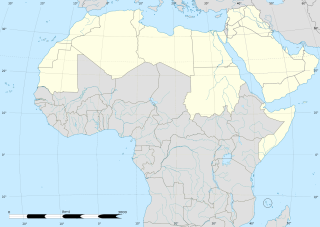
The Arab world, formally the Arab homeland, also known as the Arab nation, the Arabsphere, or the Arab states, refers to a vast group of countries, mainly located in Western Asia and Northern Africa, that linguistically or culturally share an Arab identity. A majority of people in these countries are either ethnically Arab or are Arabized, speaking the Arabic language, which is used as the lingua franca throughout the Arab world.
This gallery of sovereign state flags shows the national or state flags of sovereign states that appear on the list of sovereign states. For other flags, please see flags of active autonomist and secessionist movements, flags of extinct states and gallery of flags of dependent territories. Each flag is depicted as if the flagpole is positioned on the left of the flag, except for those of the Islamic Emirate of Afghanistan, Iran, Iraq, and Saudi Arabia, which are depicted with the hoist to the right.

The Western Bloc, also known as the Free Bloc, the Capitalist Bloc, the American Bloc, and the NATO Bloc, was a coalition of countries that were officially allied with the United States during the Cold War of 1947–1991. It was spearheaded by the member states of NATO, but also included countries that advocated democracy, anti-communism and anti-socialism, and likewise were opposed to the Soviet Union and the Warsaw Pact. The term was used to distinguish this anti-Soviet grouping from its pro-Soviet counterpart: the Eastern Bloc. Throughout the protracted period marked by Soviet–American tensions, the governments and the press of the Western Bloc were more inclined to refer to themselves as the Free World or the First World, whereas the Eastern Bloc was often referred to as the "Communist World" or more formally as the "Second World".

MENA, an acronym in the English language, refers to a grouping of countries situated in and around the Middle East and North Africa. It is also known as WANA, SWANA, or NAWA, which alternatively refers to the Middle East as Western Asia and is a way to refer to the geography instead of the political term.

The U.S.–MEFTA initiative started in 2003 with the purpose of creating a U.S.–Middle East Free Trade Area by 2013.

The bar-tailed lark or bar-tailed desert lark is a species of lark in the family Alaudidae. Two other species, the rufous-tailed lark and the Cape clapper lark are both also sometimes referred to using the name bar-tailed lark. It is found from Morocco to Pakistan. Its natural habitat is hot deserts. This is in many places a common species, but elsewhere rather less common. It has a very wide distribution and faces no obvious threats, but surveys have shown that it is slowly decreasing in numbers. The International Union for Conservation of Nature has rated its conservation status as being of "least concern".

The Pharaoh eagle-owl is a species of owl in the family Strigidae. It is native to Algeria, Chad, Egypt, Eritrea, Iran, Iraq, Israel, Jordan, Kuwait, Libya, Mali, Mauritania, Morocco, Niger, Oman, Palestine, Qatar, Saudi Arabia, Senegal, Sudan, Tunisia and the United Arab Emirates.

This is a list of the competitive matches played by the Syrian football team since its inception.

Mormogystia reibellii is a moth in the family Cossidae. It is found in North Africa and the northern part of the Arabian Peninsula, including the northern part of Saudi Arabia, northern Oman, the United Arab Emirates, Israel, Egypt, Algeria, Libya, Tunisia, Mauritania, Niger and Chad.
Holcocerus gloriosus is a species of moth of the family Cossidae. It is found in Turkmenistan, Uzbekistan, southern Kazakhstan, Iran, Afghanistan, Iraq, Jordan, Israel, northern Egypt, Saudi Arabia, Bahrain and Oman. The habitat consists of deserts.
Eremocossus vaulogeri is a species of moth of the family Cossidae. It is found in Senegal, Mauritania, Morocco, Algeria, Libya, Tunisia, Egypt, Jordan, Israel, Syria, Egypt, Oman, Yemen, the United Arab Emirates, Saudi Arabia, Iraq and southern Iran.

Visitors to Egypt must obtain a visa from one of the Egyptian diplomatic missions unless they come from one of the visa exempt countries or countries that are eligible for visa on arrival. Visitors must hold passports that are valid for at least 6 months from the date of arrival to Egypt.
This is a list of the Iraq national football team results from 1970 to 1979.
Pterotricha is a genus of ground spiders that was first described by Władysław Kulczyński in 1903.

This is a list of the Saudi Arabia national football team results from 1957 to 1979.









